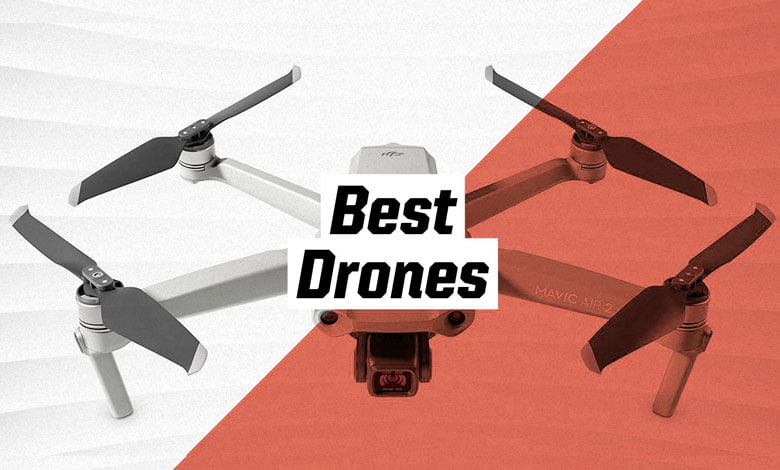
These are the best drones for video, photos and flying fun. These drones, which aren’t professional devices but are aimed at enthusiastic consumers, are roughly on a par with the cameras you’ll find in the latest phones for photo and video quality.
Investing in the best camera drones can take your photography to new heights – literally – no matter if you’re an amateur or professional. By attaching a camera to an easily-control drone, you can take stunning aerial photography and footage without having to use ladders, scaffolding or even helicopters and planes.
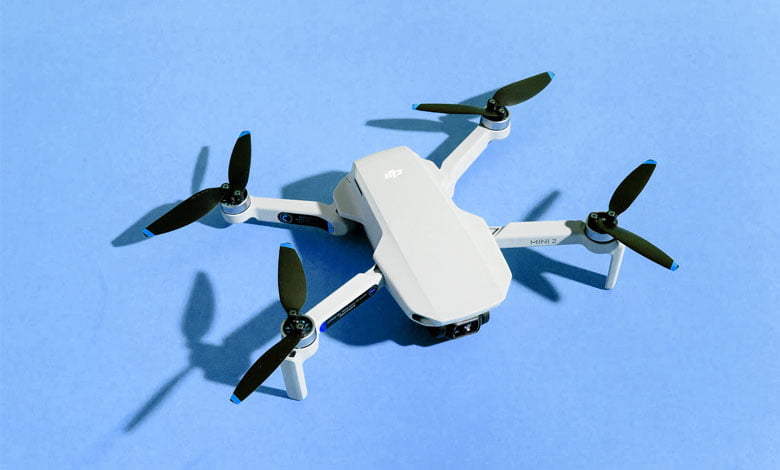
These devices are easy to control, so you don’t need specialised training – though we recommend you practise before attaching any expensive equipment to them. Many drones are controlled via handsets or even apps on your smartphone, and many come with AI features to help you fly them, maintain height and avoid collisions.
Aside from the aerial perspective, many drones employ ‘gimbals’ to ensure video is smooth and stable, and the results can be stunning.
Before you invest in a camera drone, make sure you read up on the laws and regulations surrounding them in your area. You’ll want to make sure you comply with them – and that you do so safely as well. Looking for something more ground-level, look at our guide to the best cameras in 2021.
Also Read | Best Cheap Camera for YouTube Videos in 2022
The best camera drones in 2022
1. DJI Mini 3 Pro
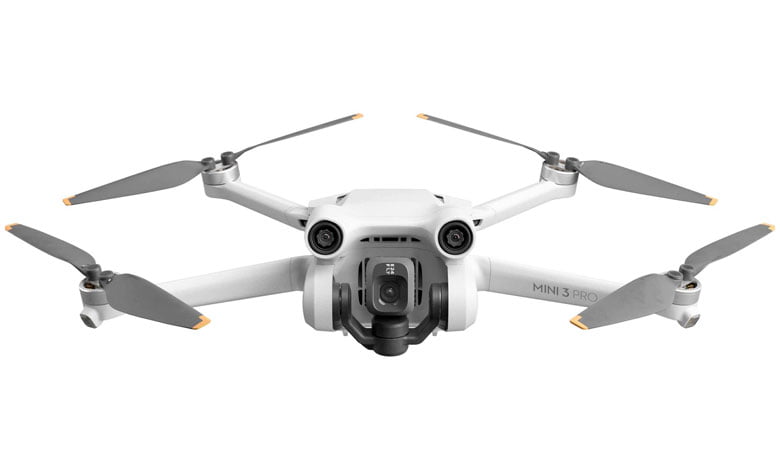
Pros
- Has obstacle sensors
- Great low-light video quality
- Can track subjects
Cons
- Relatively expensive
- No side-facing sensors
It can also track subjects, which was one of the big drawbacks of the Mini 2, for example.
DJI’s latest drone weighs less than 250g, so you don’t have to register it in some countries. But compared to previous models in the Mini range, the Pro can detect and avoid obstacles.
It will also shoot 4K60 video, or up to 4K30 in HDR, and you can record in D-Cinelike, which allows you to do your colour correction later when editing the video. If you need to record in portrait, the camera can be rotated 90° as well.
Even when bought without a controller, the Mini 3 Pro is much more expensive than the Mini 2 (and 2S), but if you want the extra features it offers, and want the best quality from a sub-250g drone, this is the one to buy.
2. DJI Mini 2: The best affordable camera drone
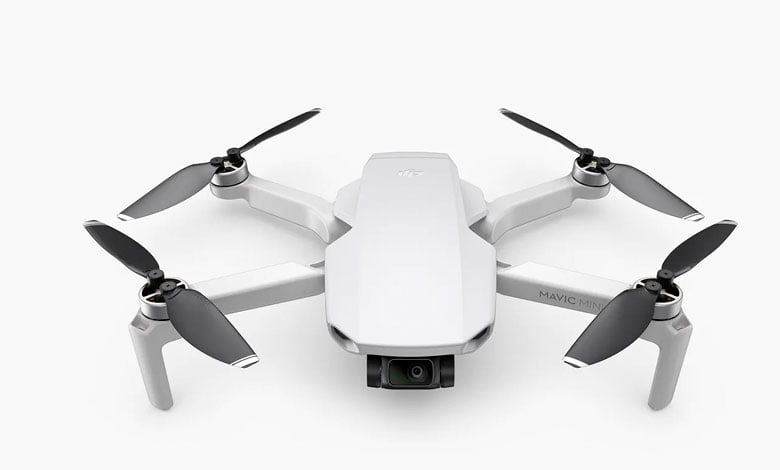
Specifications
- Weight: 249g
- Controller: Yes
- Camera resolution: 12MP
- Range: 5.8 GHz: 10km (FCC); 6km (SRRC)
- Battery size: 2,250 mAh
- Compact size
- Great price
The DJI Mavic Mini 2 fixes a lot of its professor’s flaws, especially when it comes to the lack of 4K and small range, yet it retains the compact size. With an increased range, beginner-friendly QuickShot modes and improved image quality, the DJI Mini 2 is a fantastic choice for people who want a camera drone, but can’t justify the high prices usually associated with them.
It now comes with support for raw photos, and images look better than ever, and while it’s still quite pricey, it’s almost half the price of the DJI Air 2S above. Its compact size means it’s easy to carry around with you as well, which is perfect for photographers who like to be out and about when taking photos.
Add the upgraded motors which allow for better wind resistance, the significantly better controller and massively better range (and performance when there’s lots of interference) it easily justifies the price hike.
3. DJI Air 2S
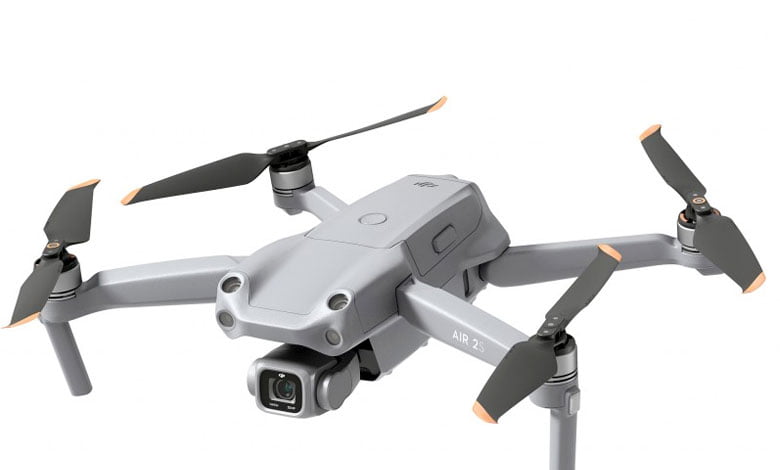
Pros
- 1-inch sensor
- HDR & Log profiles for video
Cons
- App limited to 1080p output
- More expensive than Air 2
The Air 2S is the best drone to buy if you’re not worried about registration. It’s not worth upgrading to if you already own a Mavic Air 2 but if you don’t, then there are some good reasons to buy the Air 2S instead of the cheaper Air 2, such as the camera’s bigger 1-inch sensor and extra sensors for avoiding obstacles.
It delivers better quality (then the Air 2) in low light, but this isn’t when most people fly. Put simply: if you care about eking out those last drops in video quality and know what you’re doing, the Air 2S is the obvious choice. If you don’t have the first idea about how to work with Log video and would rather stick to QuickShots and the editor in DJI’s Fly app, you’re probably better off saving your money and going with the Mavic Air 2.
4. DJI Avata
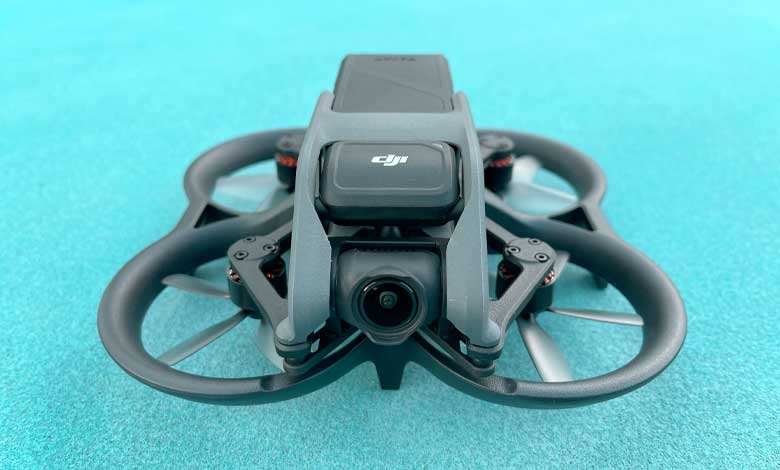
Pros
- Exhilarating FPV experience
- Intuitive DJI Motion controller
- Compact & durable
Cons
- Expensive if you don’t have existing accessories
- Not all functions are available with Motion Controller
- No automated photo/video modes like other DJI drones
The Avata is DJI’s second-gen FPV drone and is a very user-friendly way to get into the hobby: traditionally you’d put all the various parts together yourself. But while the Avata itself seems reasonably affordable, it’s expensive if you don’t already own the goggles and controller, which you probably don’t.
Instead, it’s designed to offer a ‘first-person view’, just as if you were on-board the aircraft. You get this view from the camera, yes, but not on your phone screen: you wear something akin to a VR headset, known as FPV goggles.
5. Autel EVO II: The best ultra-high resolution drone
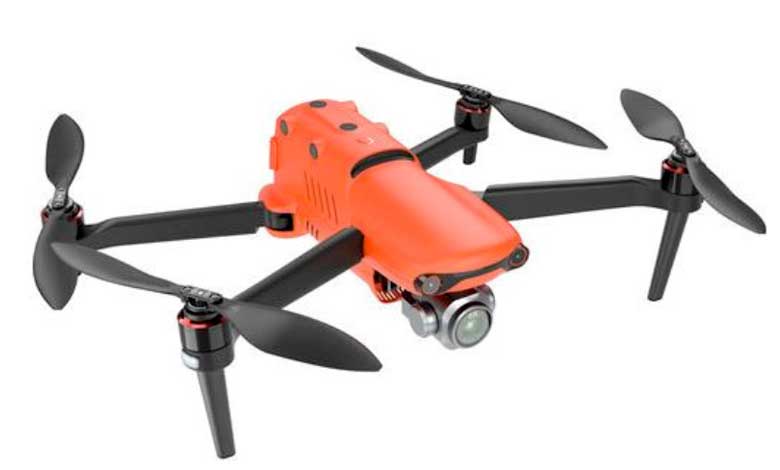
Specifications
- Weight: 1174g
- Wing span (unfolded): 397×397mm
- Controller: Yes
- Video resolution: 8K @ 25fps
- Camera resolution: 48MP
- Battery life: 40 minutes
- Max Range: 9km / 5.5mi
- Max Speed: 72kph / 44mph
What’s this, a drone on our list that’s not a DJI? Yep, this isn’t an error, believe it or not, there are other companies that make excellent camera drones. The Autel EVO II is a fantastic professional drone that can challenge the DJI Mavic 2 Pro when it comes to picture quality.
In fact, there are a few areas where the Autel EVO II beats the DJI Mavic 2 Pro. For a start, it’s able to shoot in 8K. This offers incredible detail, and while 8K TVs are still rather niche, it’s a format that will continue to grow, so you could consider this drone to be future-proof. If you’re shooting in 8K, the frames per second is reduced to 25fps, but it can also shoot in 6K at 50fps and 4K at 60fps.
The Autel EVO II also benefits from omnidirectional collision sensors, which makes it easier and safer to fly. It’s expensive, and some of its features will be overkill for many, but if you’re looking to take drone shots at incredible resolutions, this is the one to get.
Also Check | Can I have 100 money to play slots games with slotxo camp?
Drone Buying Guide
most people want a drone to take aerial photos and videos. And if you want them to be any good, you will need to spend mid-range smartphone money. We’ve yet to see a cheaper drone achieve stabilised, great quality video.
You tend to get what you pay for with drones, so the higher price, the better the camera and the more features (such as obstacle avoidance) that
Flight time and range
Don’t pay too much attention to range. It sounds great to be able to fly several kilometres away, but most local laws (including in the UK) say you must keep drone in sight at all times. What’s useful about long range claims is that these drones should cope much better with radio interference, unlike short-range models which can lose connection to the controller, or have a choppy video feed.
Very small and light drones can be blown around in the wind, which is why having GPS on board is a must: it allows the drone to automatically hover in place. Look also for the wind speed which a drone can resist: the lower the speed, the calmer conditions you’ll need to wait for before you can fly.
Cameras
Not all drones come with cameras. You don’t need a camera, since you should always have the drone in your line of sight while flying it.
At the cheaper end of the price scale you should go for at least 1080p (1920×1080). Bear in mind that – as ever – you can’t trust specs alone. Read our reviews to find out how good each drone’s camera is. Bitrate is just as important for detail in video: the DJI Mini 2’s 4K video is impressive because it can record at up to 100Mbps. The older Mavic Mini was limited to 40Mbps.
Also, you’ll only get smooth, stable footage if you buy a drone with a gimbal. This is a stabilised mount for the camera which keeps it steady when the drone tilts or moves around.